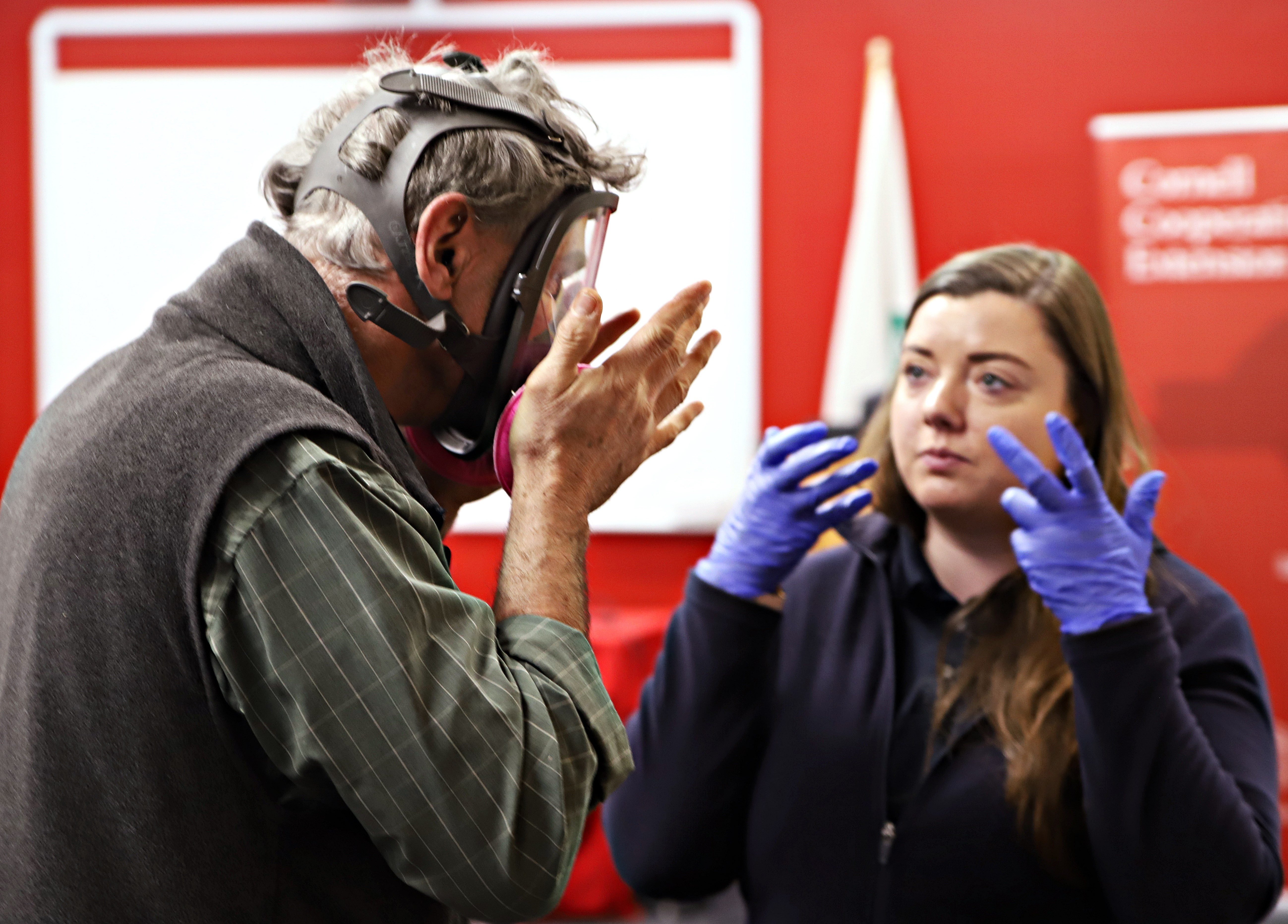News

Cloth Face Coverings vs. Respirators: What's the difference and when should we use them? - April 28, 2020
By Christina Hall, NYCAMH Farm Safety Educator
Farming in the era of COVID-19: the work is essential but how do we protect ourselves and our employees effectively in the process? The best protection controls right now are going to continue to be social distancing, wearing face coverings, sanitizing hands, and performing temperature checks.
The Centers for Disease Control and New York State both have recommendations about respiratory protection involving cloth face coverings. Some farms may already have other types of protection on hand, like respirators. Respirators and cloth face coverings provide different types of protection and prevent exposures in different ways. Here is the breakdown on different options and when to use them:
Cloth Face Coverings
The current New York State mandate is for people to wear cloth face coverings when public interactions are essential. Cloth face coverings can be homemade and are reusable. Designs for easy, homemade cloth face coverings are available at www.nycamh.org/covid-19. Using these in combination with plastic faceshields (which can be purchased online), can help to limit the potential for infection.
To be clear, cloth face coverings function to protect others around you from the airborne droplets you're exhaling, but they do not protect you from the airborne droplets others are exhaling, which is why it's important for each person to be wearing a cloth face covering and to use these in combination with other measures such as social distancing and plastic face shields. For agricultural tasks where respiratory protection is required (such as spraying pesticides), cloth face coverings are not an adequate substitute for a NIOSH certified respirator.
In a farm setting, people working closely or in closed or poorly ventilated areas should each be wearing cloth face coverings to prevent the spread of COVID-19. Those handling food should also be sure to wear them. Cloth face coverings should be removed carefully and washed regularly. It is also important to wash your hands after handling them and to use face coverings in combination with other infection control practices previously described.
Disposable N95 Respirators:
NIOSH-certified respirators meet certain standards of protection, depending on the model, and form a seal on the wearer's face to filter all incoming air. For example, the popular N95 disposable respirator protects the wearer from up to 95% of particulates when worn properly. The 'N' signifies that it is not resistant to oil, whereas an 'R' or 'P' preceding the number signify different levels of resistance to oil.
New to the market, KN95 respirators are often no more effective than cloth masks and are not designed to be reused. These are also not NIOSH approved.
You should only wear respirator models, for which you have been fit-tested and which match the task you are completing. A passed fit test ensures that a particular respirator will properly protect you from harmful exposures. Without a fit test, you could risk wearing the wrong size respirator, which would not be effective at protecting you.
Respirators are currently in short supply with priority for inventory being given to healthcare workers working in high-exposure settings. For farmers, that means that it may be difficult to purchase more of these even though you may have tasks that require you or your employees to wear a respirator. It is important, then, to use your inventory of disposable respirators only when the hazards of your workplace require it. Each worker should have been fit tested in the model you have available. Workers who do not have a prior valid fit test should not wear a respirator and should not perform tasks where one is required until fit testing becomes available. (For information on temporary relaxations to Worker Protection Standards, go to: https://www.nycamh.org/news.php?id=806)
On and off your face, a mask is only as safe as you handle it
Respirator shortages also make donning and doffing (putting on and taking off) your respirators and properly maintaining them very important in order to increase their longevity and reduce your exposure. Disposable respirators are not designed to be reused again and again. Take care to don and doff respirators carefully and slowly to avoid contamination on the inside of the respirator, and store the respirator in a clean brown paper bag.
Unlike in a healthcare setting, disposable respirators worn on farms are likely to get soiled or hard to breathe through more quickly because of the nature of the dusty or dirty work that gets done while wearing them. Disposable respirators should then be disposed of when soiled, hard to breathe through, or damaged. Always wash your hands after handling.
Other respirators like half-face or full-face respirators have a longer lifespan when used and maintained properly. These can be reused and so, over time, may be a more cost-effective solution. Filters or cartridges should be stored separate from respirators and the respirator itself should be washed after wearing.

